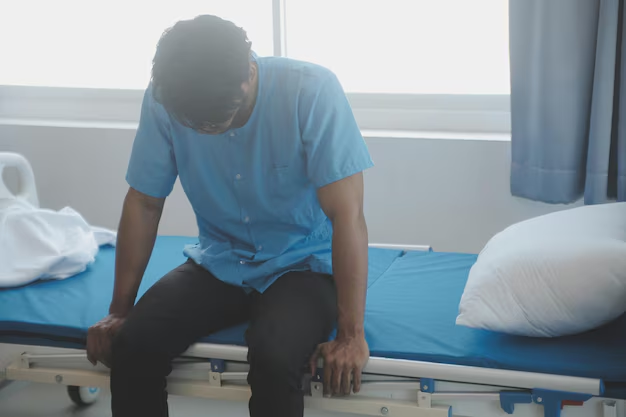Understanding the Complexity of Parkinson’s Leg Pain: What Does It Feel Like?
Parkinson's disease is a complex neurological disorder that affects movement, balance, and coordination. While many people are familiar with the classic symptoms like tremors and stiffness, there's another aspect of Parkinson's that’s often less discussed but equally impactful—leg pain. Understanding the nuances of leg pain in Parkinson's can help patients, caregivers, and loved ones better comprehend the daily challenges faced by those living with this condition.
The Nature of Parkinson’s Leg Pain
Sensory Symptoms and Discomfort
Parkinson’s leg pain can manifest in various forms, ranging from constant aches to sporadic sharp pains. Patients often describe it as:
- A deep, aching pain: This can feel similar to muscle fatigue after heavy exercise, an endless cramp that refuses to loosen its grip.
- Burning or tingling sensations: These sensory symptoms, often called paresthesia, resemble the pins-and-needles feeling when a limb goes numb.
- Sharp, shooting pains: These can occur unexpectedly, similar to electric shocks that shoot along the leg.
The Role of Akinetic-Rigid Syndrome
The akinetic-rigid syndrome, a component of Parkinson’s, leads to stiffness and reduced movement or akinesia. This stiffness can contribute to pain, making muscles feel tight and contracted, further exacerbating leg discomfort.
Factors Influencing Leg Pain in Parkinson's
Dopamine Depletion
At the heart of Parkinson's is the depletion of dopamine, a neurotransmitter essential for smooth, coordinated movements. This deficiency affects muscle control and can contribute to leg pain by causing muscle contractions and misfires—leading to involuntary, painful movements.
Non-Motor Symptoms
While primarily associated with movement, Parkinson’s also includes non-motor symptoms such as sleep disturbances and mood changes. Poor sleep can heighten the perception of pain, creating a cycle where pain disrupts sleep and inadequate rest worsens pain sensitivity.
The Mental Health Connection
Chronic pain can significantly impact mental health, leading to conditions such as anxiety and depression. Conversely, these mental health issues can amplify the sensation of pain, creating a complex interplay between physical and emotional well-being.
Living with Parkinson’s Leg Pain
Effective Communication with Healthcare Providers
One of the most crucial steps for managing leg pain is to communicate effectively with healthcare providers. Describing the pain accurately, noting its frequency, intensity, and triggers, can assist doctors in tailoring treatment approaches that best suit the individual.
Exploring Therapeutic Options
While medication is a common treatment avenue, patients should also consider complementary therapies such as:
- Physical therapy: Tailored exercises can improve flexibility and reduce stiffness, offering some relief.
- Massage and acupuncture: These therapies can help reduce muscle tension and enhance relaxation, alleviating pain.
- Mind-body practices like yoga and tai chi: These practices promote mindfulness and can improve balance and movement confidence.
Lifestyle Adjustments
- Regular exercise: Even gentle exercises can improve muscle strength and reduce the progression of stiffness and pain.
- Dietary considerations: A balanced diet rich in antioxidants and omega-3 fatty acids may contribute to neurological health.
- Quality sleep: Implementing a consistent sleep schedule can help manage pain perception and improve overall quality of life.
Embracing a Support System
The Role of Caregivers
Caregivers play a pivotal role in supporting individuals with Parkinson’s. They can help by:
- Tracking and noting symptoms for healthcare visits.
- Assisting in daily exercise routines.
- Providing emotional support and encouragement.
Community and Support Groups
Engaging with support groups can provide both patients and caregivers with a network of individuals facing similar challenges. Sharing experiences and coping strategies can offer comfort and practical insights into managing daily life with Parkinson’s.
Navigating Daily Life with Confidence
Adaptive Tools
Many adaptive tools can make a considerable difference in daily life:
- Walking aids: Such as canes or walkers, to improve mobility and confidence.
- Ergonomic chairs and cushions: To help maintain good posture and reduce strain on muscles.
Setting Realistic Goals
Setting achievable goals, whether they involve walking a short distance more than usual or participating in a new social activity, can foster a sense of accomplishment and improve morale.
Cultivating Mindfulness
Mindfulness techniques can help manage pain by redirecting focus and reducing stress. Practicing deep breathing exercises and mindful meditation can enhance relaxation and reduce the emotional impact of pain.
Highlighting Individual Experiences
Personal Stories of Overcoming Challenges
Reading personal accounts from others living with Parkinson’s can offer valuable insights and inspiration. These stories can shed light on the myriad ways people cope with pain, adapt to their condition, and find joy despite challenges.
Engaging with the community through blogs, forums, or local events can also foster a sense of belonging and improve mental well-being.
Summary of Key Points
Here’s a quick look at essential insights for understanding and managing Parkinson’s leg pain:
- Varied Pain Types: Deep aches, tingling, and sharp pains.
- Dopamine Connection: Muscle control issues arise from dopamine depletion.
- Mind-Body Impact: Pain affects and is affected by mental health.
- Therapeutic Options: Combine medication with physical therapy and alternative therapies.
- Lifestyle Focus: Exercise, diet, and sleep are crucial.
- Support Systems: Engagement with caregivers and community bolsters support.
- Tools and Adaptations: Utilize aids to enhance mobility and comfort.
- Mindfulness: Use meditation to reduce stress associated with pain.
Understanding the intricate nature of Parkinson's leg pain requires acknowledging its pervasive impact on physical and mental health. Through an integrated approach involving self-care, community support, and medical guidance, individuals can navigate their journey with resilience and hope. 🌟

Related Articles
- Are There Environmental Causes Of Parkinsons
- Can Alcohol Cause Parkinson's
- Can Concussions Cause Parkinson's
- Can Females Get Parkinson Disease
- Can Head Trauma Cause Parkinson's
- Can Parkinson Disease Cause Dizziness
- Can Parkinson's Affect Eyesight
- Can Parkinson's Affect Memory
- Can Parkinson's Affect Speech
- Can Parkinson's Affect Vision